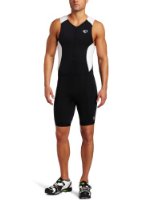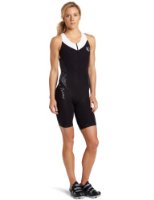Periodization can be quite a complex subject, but this article helped me to at least understand the basics. Although written specifically for running, I dare say the same principles could be applied to all three triathlon disciplines. Mike
With all the workouts you try to fit in—long runs, tempo miles, track intervals, hill repeats, strength training—sometimes it seems that in order to run well, you’d have to quit your day job to train 20 hours a week. Fortunately, you don’t have to give up your paycheck or your running. You just need to “periodize” your training.
Periodization divides a training cycle of, say, 16 to 20 weeks into phases, each with a specific goal, so you don’t have to do every type of workout all the time. In fact, you shouldn’t. The phases allow you to combine the benefits of different workouts that collectively add up to peak conditioning. And they build variety into your training, which limits your chances of hitting a plateau or suffering from fatigue or injury.
“Periodization helps you reach a higher level of performance,” says George Dallam, a professor of exercise science at Colorado State University-Pueblo and an elite triathlon coach. “It encourages you to plan your running. You’re always more successful when you plan.”
Nearly every elite runner uses periodization. The number, type, and length of phases can vary, but programs typically include a base, a preparation, and a peak period that lasts four to eight weeks, with each phase building on the previous one.
The base phase develops endurance, the foundation of any distance-running plan. Phase two, preparation, adds a layer of speed by introducing tempo runs and long repeats. “These workouts strengthen the muscles, ligaments, and connective tissues, which prepares the body for the demands of fast running,” says running coach Greg McMillan of Flagstaff, Arizona. The peak phase is characterized by short, fast workouts that simulate racing. These workouts fine-tune the speed you began in phase two by further recruiting fast-twitch muscle fibers, improving running economy (how efficiently your body uses oxygen), and strengthening muscles and connective tissue.
To peak for key races, mark your event (or events) on a calendar and use the guide below, along with your favorite training programs, to map out your base, preparation, and peak phases. Each should be four to eight weeks long (you can extend the base or preparation phase beyond eight, but not the peak, to avoid burnout). Every fourth week, recover by reducing your miles by 10 to 50 percent and easing up on strength training. And after your peak, you can start again with base training—whenever you’re ready—and work your way through the phases over and over again.
Phase 1: BASE
10 percent Speedwork
15 percent Strength
This phase emphasizes easy miles, but don’t confuse base training with fitness running. You are building a base by increasing miles and adding some speed and strength work.
Key Workouts
Endurance: The long run. “Long runs teach your body to run more efficiently,” says McMillan. Build to five to 10 miles, depending on your goals.
Pace: Easy enough that you can talk comfortably.
Speedwork: Strides, mini-tempo. Do eight to 10 x 20- to 30-second bursts of speed at the end of one or two of your easy runs. In the last few weeks of the phase, add 10 to 15 minutes of faster running (no faster than half-marathon pace) into one of your runs. “The idea is to push yourself a little, so it’s not a shock when you go faster in the next phase,” says Kristen Dieffenbach, Ph.D., a professor of athletic coaching education at West Virginia University in Morgantown.
Strength: Running-specific exercises. Do a weight workout two or three times a week, emphasizing exercises that strengthen the key running muscles — hamstrings, quadriceps, calves, and glutes.
Phase 2: PREPARATION
60 percent Endurance
15 percent Speedwork
25 percent Strength
Preparation means strengthening the body for the fast running to come, says McMillan. You continue to build endurance through long runs, but a few of your easy days become tempo miles or hill repeats.
Key Workouts
Endurance: The long run. Continue to build or maintain endurance by upping your long runs to 6 to 15 (or more) miles, depending on race distance.
Pace: Half-marathon race pace or slightly faster, or a seven or eight on a 10-point perceived-exertion scale. You can alternate your tempo runs with long repeats (miles, 1200 meters) run at 10K pace to help prepare your body for faster running.
Speedwork: Tempo runs or long repeats. Tempo running trains your system to utilize lactate instead of letting it shut you down, and also develops muscular endurance and strengthens connective tissues.
Strength: Hill running. Hills are by far the best strength training for runners, says McMillan, because they’re specific to the sport and they put the same demand on your muscles as weight training. Run them at a hard, but not all-out effort. Reduce your gym workout to once a week or upper body only.
Phase 3: PEAK
40 percent Endurance
50 percent Speedwork
10 percent Strength
You have one goal this period: speed. Gradually increase the intensity of your workouts, and as you do so, drop the overall volume (miles/hours) by about 10 percent.
Key Workouts
Endurance: The long run. Maintain endurance with long runs slightly shorter than those in Phase 2, depending on your race goals. For example, if you topped out at 14 miles in the prep phase, run 10 in this one. Shorten them further as race day approaches.
Speedwork: Two speed sessions a week dominate this phase, as well as the option to run tune-up events—shorter races to help you prepare for your main event. Focus one session on short, fast repeats, such as 400s or 800s at 5K pace. Do a tempo run or long repeats (1200s for example) for your second speed session.
Strength: Replace one speed session every third week with a hill workout to retain strength and power. You can continue your strength training once a week, maintaining the same weights and reps; or put weight-training on hold until after your race.
Author: Christie Aschwanden (11 Dec 2009)
http://www.active.com/running/Articles/Your_3-part_Training_Plan.htm
 For every activity, there is apparel that goes with it, and for triathlon athletes, a Tri Suit is their go to apparel for it can be worn for all the levels of triathlon. While some people choose to wear their Tri Suit under their wet suit, most will only wear their Tri Suit and start their competition wearing the same apparel they will be wearing at the finish line.
For every activity, there is apparel that goes with it, and for triathlon athletes, a Tri Suit is their go to apparel for it can be worn for all the levels of triathlon. While some people choose to wear their Tri Suit under their wet suit, most will only wear their Tri Suit and start their competition wearing the same apparel they will be wearing at the finish line. The chamois should be thin and your suit should be breathable for the suit to dry quickly. Most suits come with modern technology that allows them to dry quickly. The level, to which your suit repels the water while swimming, will come in handy here as the more water repellant it is, the faster it will dry. A mesh paneling on the suit will also help both its breathable quality and the speed at which it dries.
The chamois should be thin and your suit should be breathable for the suit to dry quickly. Most suits come with modern technology that allows them to dry quickly. The level, to which your suit repels the water while swimming, will come in handy here as the more water repellant it is, the faster it will dry. A mesh paneling on the suit will also help both its breathable quality and the speed at which it dries.
